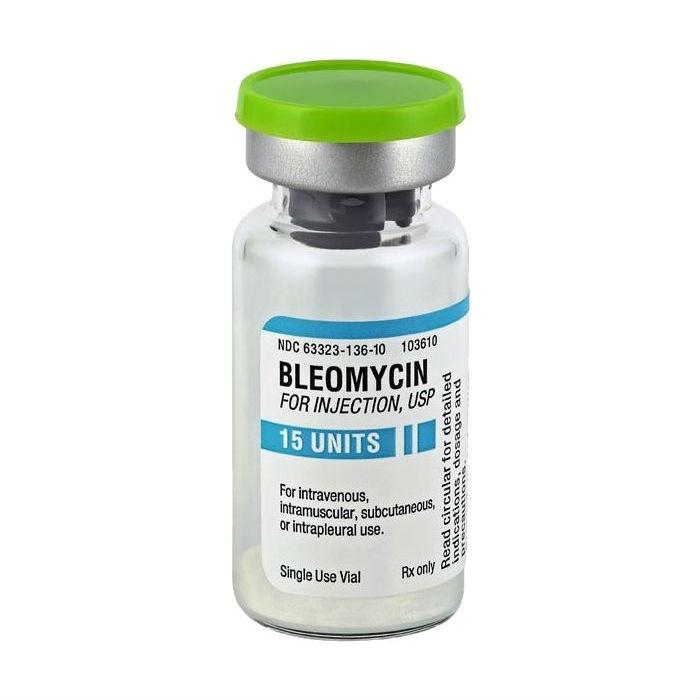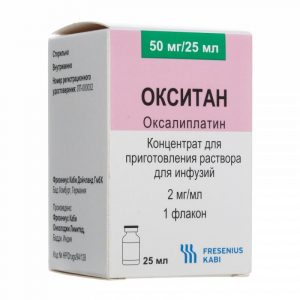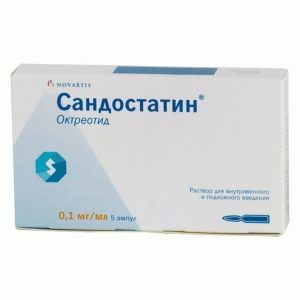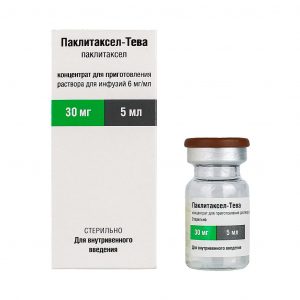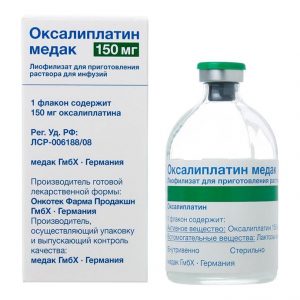Description
Latin name
Bleocin
Release form
Lyophilisate for solution for injection.
Packing
In a bottle of 15 mg of lyophilisate. In the package 1 bottle.
Pharmacological action
Pharmacodynamics
Antitumor agent. It is an A2 fraction isolated from a Streptomyces verticillus culture containing the antitumor antibiotic itself. The mechanism of action is associated with the ability to cause fragmentation of DNA molecules. It has a weakly expressed myelodepressive and immunosuppressive activity.
Pharmacokinetics
1% Protein Binding. It undergoes metabolism, the paths of which are not exactly established.
T1 / 2 with KK more than 35 ml / min is 115 minutes. It is excreted by the kidneys, 60-70% mainly unchanged.
Indications
Cancer of the skin, esophagus, lung, cervix, thyroid, kidney
malignant tumors of the head and neck
sarcoma of soft tissues, osteogenic sarcoma
lymphogranulomatosis, non-Hodgkin lymphomas, germ cell tumors of the testis and ovaries.
treatment and prevention of exudative pleurisy and treatment of exudative peritonitis in malignant tumors (intracavitary administration).
Contraindications
Severe respiratory dysfunction
pulmonary fibrosis
severe renal dysfunction (CC less than 35 ml / min) and / or liver
severe cardiovascular disease
pregnancy
hypersensitivity to bleeding.
Use during pregnancy and lactation
Bleomycin is contraindicated in pregnancy. If necessary, use during lactation, breastfeeding should be discontinued.
Women of childbearing age receiving bleomycin therapy should use reliable methods of contraception.
In experimental studies, the teratogenic and embryotoxic effects of bleomycin have been established.
Composition
1 bottle contains:
Active substances: bleomycin (in the form of hydrochloride) – 15 mg.
Dosage and administration of
In each individual case, when choosing a dose and regimen for the administration of Bleocin, special literature data should be used.
Bleocin can be administered intramuscularly, intravenously, subcutaneously or intrapleurally.
Recommended doses: intramuscularly (in 1-5 ml of water for injection, alternating injection sites) or intravenously (5-10 ml of 0.9% sodium chloride solution or water for injection for 5-10 minutes) at a dose of 10- 15 mg / m? once or twice a week, intrapleurally (in 50-100 ml of 0.9% sodium chloride solution after the evacuation of the maximum possible amount of exudate) 60 mg once.
Due to the increased risk of developing an anaphylactic reaction in patients with malignant lymphomas, the initial dose may be reduced (for example, to 2-3 mg / m?). In the absence of an acute reaction to the administration of the drug, further therapy can be continued in the usual dose.
The total total dose of Bleocin should not exceed 400 mg and further administration of the drug can be carried out only after evaluating lung function.
In elderly patients, the dose is determined as follows:
Age (years) Total dose Weekly dose
80 and older 100 mg15 mg
70-79150-200 mg30 mg
60-69200-300 mg30-60 mg
Less than 60400 mg30-60 mg
The introduction of Bleocin in children can be carried out only in special cases, the determination of the dose of the drug should be based on the surface of the body.
During radiation therapy, the dose of Bleocin should be reduced, since the irradiated tissues are more sensitive to the drug. Dose adjustment should be carried out if Bleocin is used in combination with other chemotherapy drugs.
In patients with impaired renal function, the dose of Bleocin changes as follows – at a serum creatinine level of 130-180 μmol / L, the drug dose should be reduced by 50% at a serum creatinine level of more than 180 μmol / L, the drug is delayed until the creatinine levels are normalized .
Side effects
From the respiratory system: interstitial pneumonia, pulmonary fibrosis.
From the digestive system: nausea, vomiting, anorexia, angular stomatitis, impaired liver function.
From the urinary system: impaired renal function, frequent and painful urination.
From the side of the central nervous system: headache, dizziness.
From the reproductive system: azoospermia, amenorrhea.
Allergic reactions: erythema, urticaria, anaphylactoid reactions. Dermatological reactions: focal hyperkeratoses, hyperpigmentation, dermatitis, deformation of nails, alopecia.
Other: fever, leukopenia rarely – toxic effect on blood vessels (including cerebral arteritis, stroke, myocardial infarction).
Drug Interaction
Bleomycin increases the risk of pneumotoxic effects in patients receiving oxygen (for example, as part of general anesthesia).
When used concurrently with drugs, exerting a myelotoxic and pneumotoxic effect may increase the risk of side effects.
It is possible to slow the bleomycin clearance and increase its toxicity even when used in low doses due to the nephrotoxic effect of cisplatin.
overdose
Symptoms: immediate acute reactions in case of overdose are arterial hypotension, fever, increased heart rate, and general shock symptoms.
Treatment: symptomatic. In case of complications from the bronchopulmonary system, patients should be prescribed treatment with glucocorticosteroids and broad-spectrum antibiotics.
Storage conditions
Store in a dry, dark place at a temperature not exceeding 30 ° C.
Keep out of the reach of children.
Expiration
2 years.
Dosage form
dosage form
injection and infusion
Nippon Kayaköy, Japan
